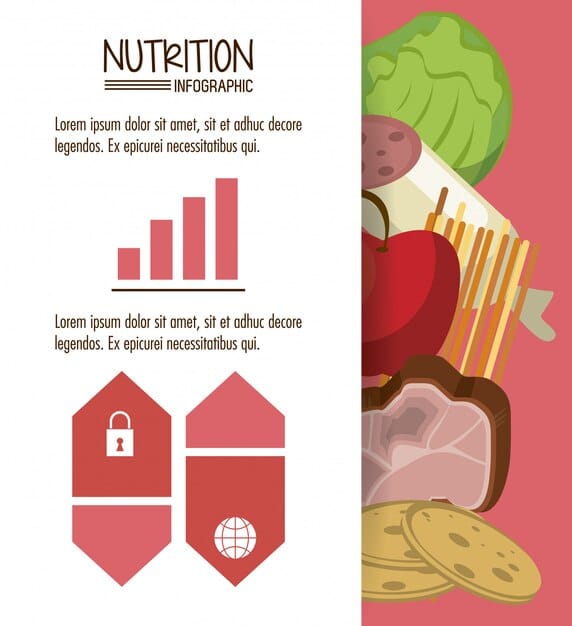2025 USDA Guidelines: How They Change Your Calorie Intake

The updated 2025 USDA Dietary Guidelines emphasize personalized nutrition, focusing on dietary patterns over specific calorie counts, and promoting healthy food choices across all life stages to improve overall health outcomes.
How will the updated USDA Dietary Guidelines for 2025 influence your daily calorie intake? Understanding these guidelines is crucial for maintaining a balanced and healthy diet tailored to your individual needs.
Understanding the 2025 USDA Dietary Guidelines
The USDA Dietary Guidelines are updated every five years to reflect the latest scientific research on nutrition and health. The 2025 guidelines are expected to emphasize a more personalized approach to nutrition, taking into account individual factors like age, sex, activity level, and specific health conditions.
These guidelines serve as a cornerstone for federal nutrition programs and provide advice for Americans on what to eat and drink to meet nutrient needs, promote health, and prevent chronic disease.
Key Goals of the 2025 Guidelines
The 2025 USDA Dietary Guidelines aim to promote overall health and well-being by focusing on several key areas.
- Focus on dietary patterns rather than specific nutrients or calorie counts.
- Encourage a higher intake of fruits, vegetables, and whole grains.
- Promote lean protein sources and healthy fats.
- Limit added sugars, saturated fats, and sodium.
By following these guidelines, individuals can work toward achieving and maintaining a healthy weight, reducing their risk of chronic diseases, and improving their overall quality of life.
In essence, the 2025 USDA Dietary Guidelines provide a roadmap for making informed food choices that support long-term health and wellness.

The Shift Towards Personalized Nutrition
One of the most significant changes expected in the 2025 USDA Dietary Guidelines is the increased emphasis on personalized nutrition. This approach recognizes that individuals have unique dietary needs and that a one-size-fits-all approach is not effective.
Personalized nutrition takes into account various factors, including genetics, lifestyle, and health status, to develop tailored dietary recommendations.
How Personalized Nutrition Impacts Calorie Intake
Personalized nutrition can significantly impact daily calorie intake recommendations. Rather than relying on general calorie guidelines, individuals are encouraged to work with healthcare professionals or registered dietitians to determine their specific calorie needs based on their personal characteristics.
- Age and sex: Calorie needs vary based on age and sex, with younger individuals and males typically requiring more calories.
- Activity level: Individuals with higher activity levels need more calories to fuel their bodies.
- Health conditions: Certain health conditions, such as diabetes or heart disease, may require specific calorie adjustments.
By considering these factors, individuals can create a personalized nutrition plan that supports their health goals and optimizes their calorie intake for overall well-being.
Ultimately, personalized nutrition empowers individuals to take control of their health by making informed food choices that align with their unique needs.
Understanding Calorie Recommendations in the 2025 Guidelines
While the 2025 USDA Dietary Guidelines may shift towards personalized nutrition, understanding general calorie recommendations remains essential. These recommendations provide a baseline for individuals to estimate their daily energy needs and make appropriate dietary adjustments.
Calorie recommendations are typically based on age, sex, and activity level.
General Calorie Guidelines
The USDA provides general calorie guidelines for different age groups and activity levels. These guidelines can help individuals estimate their daily calorie needs.
- Sedentary adults: Typically require 1,600 to 2,200 calories per day.
- Moderately active adults: Usually need 1,800 to 2,600 calories per day.
- Active adults: May require 2,200 to 3,200 calories per day.
It’s important to note that these are just general guidelines, and individual calorie needs may vary. Factors like metabolism, body composition, and specific health goals can influence calorie requirements.
Therefore, while general calorie recommendations provide a starting point, personalized assessment is essential for optimizing calorie intake.
The Role of Macronutrients in Calorie Balance
Macronutrients—proteins, carbohydrates, and fats—play a crucial role in calorie balance and overall health. The 2025 USDA Dietary Guidelines emphasize the importance of consuming a balanced intake of these macronutrients to support optimal bodily functions.
Each macronutrient provides a different amount of energy per gram.
Balancing Macronutrient Intake
Balancing macronutrient intake is vital for maintaining energy levels, supporting muscle growth and repair, and promoting overall health.
- Proteins: Essential for building and repairing tissues, as well as producing enzymes and hormones.
- Carbohydrates: The primary source of energy for the body, especially during physical activity.
- Fats: Provide energy, support cell growth, and help absorb certain vitamins and minerals.
The 2025 USDA Dietary Guidelines recommend consuming a balanced intake of these macronutrients, with an emphasis on lean protein sources, complex carbohydrates, and healthy fats.
By focusing on the quality and quantity of macronutrients, individuals can better manage their calorie intake and support their health goals.

Practical Tips for Adjusting Your Daily Calorie Intake
Adjusting your daily calorie intake can be a challenging task, but with the right strategies, it’s achievable. The 2025 USDA Dietary Guidelines offer several practical tips for individuals looking to manage their calorie intake effectively.
These tips focus on making gradual changes to dietary habits and lifestyle.
Strategies for Calorie Management
Several strategies can help individuals adjust their daily calorie intake and achieve their health goals.
- Track your food intake: Keep a food diary or use a mobile app to monitor your calorie consumption.
- Read nutrition labels: Pay attention to serving sizes and calorie counts on food packaging.
- Choose nutrient-dense foods: Focus on foods that are high in nutrients and low in calories.
By implementing these strategies, individuals can gain better control over their calorie intake and make informed food choices that align with their health goals.
Remember, making small, sustainable changes to your diet is more effective than drastic measures in the long run.
The Long-Term Impact of Following the 2025 Guidelines
Following the 2025 USDA Dietary Guidelines can have a significant long-term impact on overall health and well-being. By adopting a personalized approach to nutrition and making informed food choices, individuals can reduce their risk of chronic diseases and improve their quality of life.
The guidelines emphasize sustainable dietary habits for long-term health.
Benefits of Adhering to the Guidelines
Adhering to the 2025 USDA Dietary Guidelines can lead to numerous health benefits.
- Reduced risk of chronic diseases: A balanced diet can lower the risk of heart disease, diabetes, and certain cancers.
- Improved weight management: Monitoring calorie intake and choosing nutrient-dense foods can help maintain a healthy weight.
- Enhanced energy levels: Consuming a balanced intake of macronutrients can improve energy levels and overall vitality.
By making sustainable changes to their dietary habits, individuals can reap these long-term health benefits and enjoy a higher quality of life.
In conclusion, the 2025 USDA Dietary Guidelines provide a valuable framework for promoting health and preventing chronic diseases through informed food choices and personalized nutrition.
| Key Point | Brief Description |
|---|---|
| 🍎 Personalized Nutrition | Tailoring diet to individual needs (age, sex, activity). |
| 🥗 Dietary Patterns | Focusing on overall eating habits, not just single nutrients. |
| 💪 Macronutrient Balance | Ensuring proper intake of protein, carbs, and fats. |
| 📊 Calorie Awareness | Understanding general calorie needs based on activity levels. |
Frequently Asked Questions
Personalized nutrition tailors dietary recommendations to an individual’s specific needs, considering factors like age, sex, activity level, and health conditions.
The USDA Dietary Guidelines are updated every five years to incorporate the latest scientific research on nutrition and health.
Macronutrients are the essential nutrients—proteins, carbohydrates, and fats—that provide energy and support various bodily functions.
You can track your calorie intake by keeping a food diary, using mobile apps, or consulting with a registered dietitian for personalized guidance.
Following the USDA Dietary Guidelines can reduce the risk of chronic diseases, improve weight management, and enhance overall energy levels and vitality.
Conclusion
In conclusion, understanding how the updated 2025 USDA Dietary Guidelines impact your daily calorie intake is essential for maintaining a balanced and healthy diet. By focusing on personalized nutrition, balancing macronutrients, and implementing practical strategies for calorie management, you can achieve your health goals and improve your overall well-being.





